
There is no need to wonder why growing strawberries is so popular. They’re extremely rewarding, not just in harvest size but in looks, and incredibly easy to grow. Their small white blooms are pretty, adding a touch of sweetness to your garden.
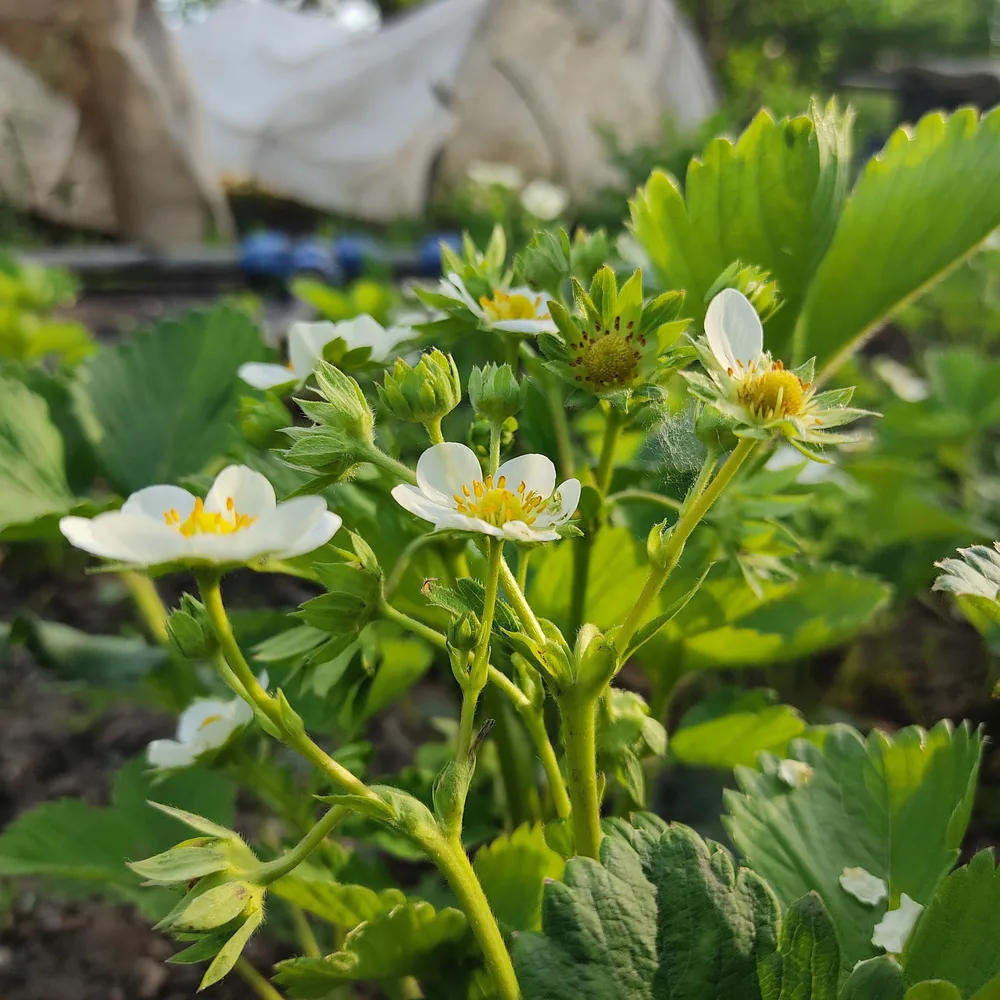
Even though they’re easy to grow, strawberries are tough plants to master. Leaf spot and a variety of other diseases love to plague garden strawberries.
A plethora of pests, including aphids and nematodes, are common problems facing home gardeners growing strawberries. One of the best ways to organically combat these issues is companion planting.
Companion planting is a helpful technique that improves the overall health of plants. It’s typically used for fruits and vegetables. Certain plants attract beneficial insects to your garden while deterring pests and diseases. Others aid in improving soil conditions. The practice has even been used in landscaping to get the best out of flowering plants and shrubs.
There are also a few plants that don’t do well when paired with strawberries to watch out for. This list will separate the good from the bad, ensuring you only keep good strawberry friends in your strawberry patch.
Growing Strawberries
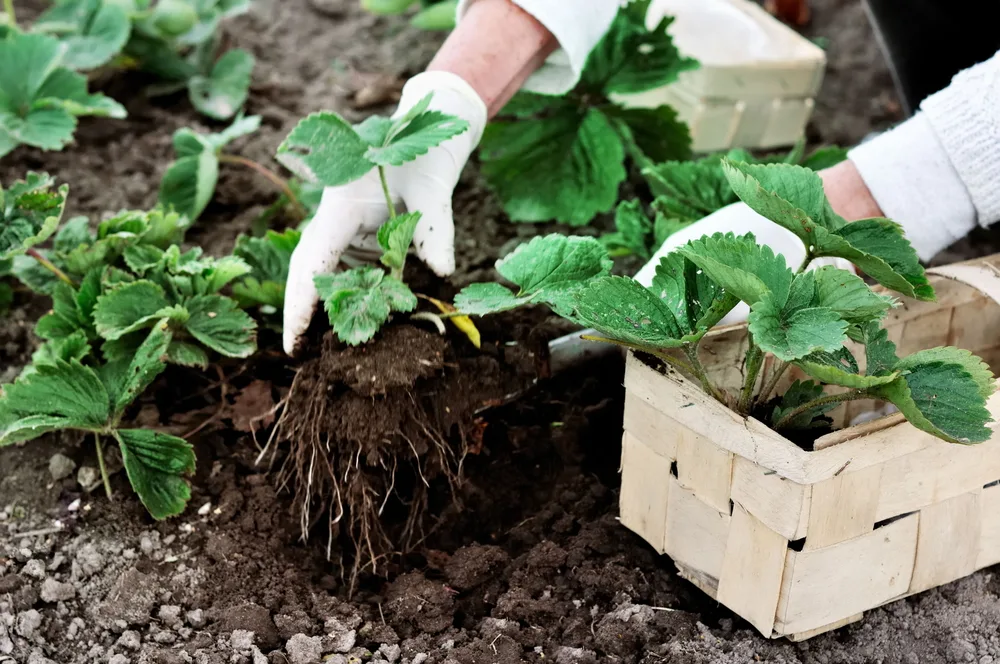
Before we get into which plants to pair with your strawberries, let’s chat first about their optimal growing conditions.
Its needs are simple enough – a full day of sun and rich loamy, well-draining soil. They thrive in USDA Zones 4-9 but their prime planting time is dependent on climate. Those in cooler areas may need to plant their strawberries in spring, whereas those in warmer climates can plant theirs as early as fall.
Strawberries are cold-hardy plants, tolerating lower temperatures. Humidity can be an issue as it encourages mildew growth. Airflow is important for strawberries to stay dry and prevent the growth of mold and other diseases. The correct spacing, of about 16 inches, optimizes airflow for strawberries.
Strawberries love well-draining soil and need plenty of water to develop juicy fruits. Mulching may be necessary to keep the soil moist and cool.
Here’s our step-by-step guide to planting a new strawberry bed. And if you’d like a few more creative ways to grow strawberries, then take a look at these 15 interesting planting ideas.
Now that we’ve got that down, let’s get into the 11 best companion plants for strawberries.
11 Companion Plants for Strawberries
1. Asparagus
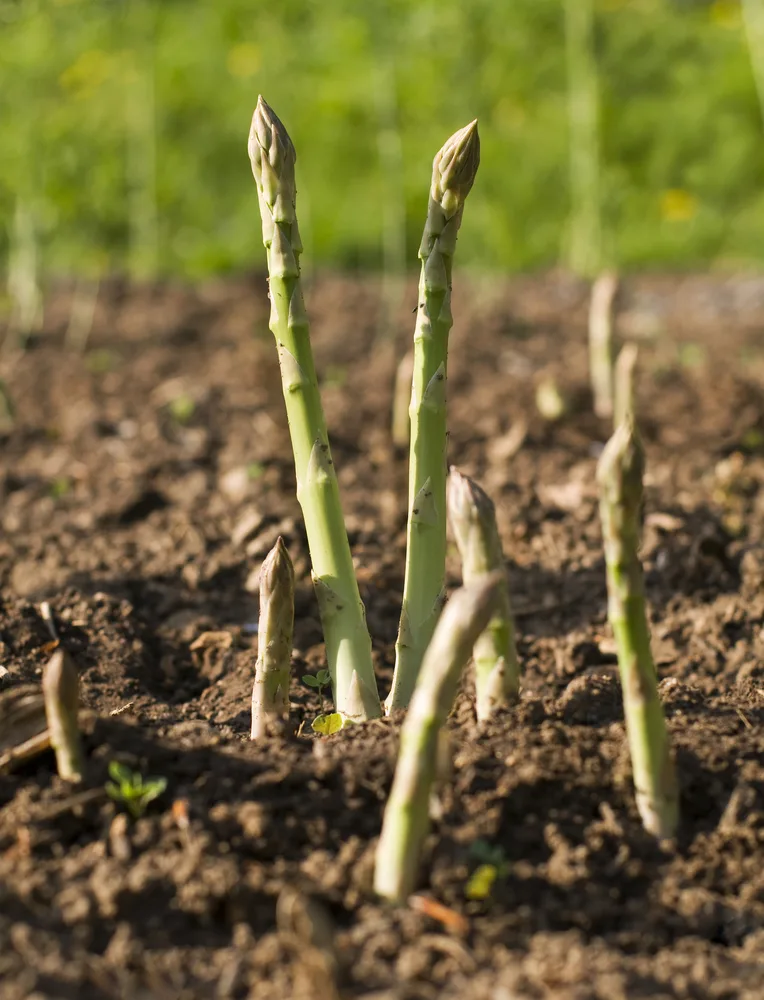
Some plant pairs might as well be a match made in heaven. This is the case for asparagus and strawberries. They both enjoy similar climates and soil conditions. Asparagus thrives in full sun, needing water regularly. Well-draining soil is an absolute must, too.
The most beneficial thing about pairing these two together is their ability to share soil nutrients. Asparagus and strawberries’ root lengths are different, meaning that they won’t compete for nutrients, resulting in healthier plants and higher yields for both.
2. Bush beans

Beans and other members of the legume family are a must-have in any veggie garden. They’re easy to grow and very good for you.
On top of that, they are capable of nitrogen-fixing. Simply, legumes help transform nitrogen in the soil into ammonia. Ammonia is a form of nitrogen that can be used by plants. This process is spearheaded by good bacteria that live on the roots of legumes. The major benefit of ammonia is that it stays in the soil even after the legume plant dies off, continuing to enrich the soil for future plantings and ultimately benefiting strawberries.
Bush beans also repel beetles and several other bugs that attack strawberries and their foliage.
This legume thrives in USDA Zones 2-11, adapting to a variety of climates. However, extreme variances in temperature can be detrimental to bush beans. Otherwise, they are easy to care for.
They need plenty of sunlight and well-draining soil too. They can also be mulched to keep the soil moist and cool. The benefits and similar growing conditions make bush beans and strawberries a fantastic pair.
3. Borage
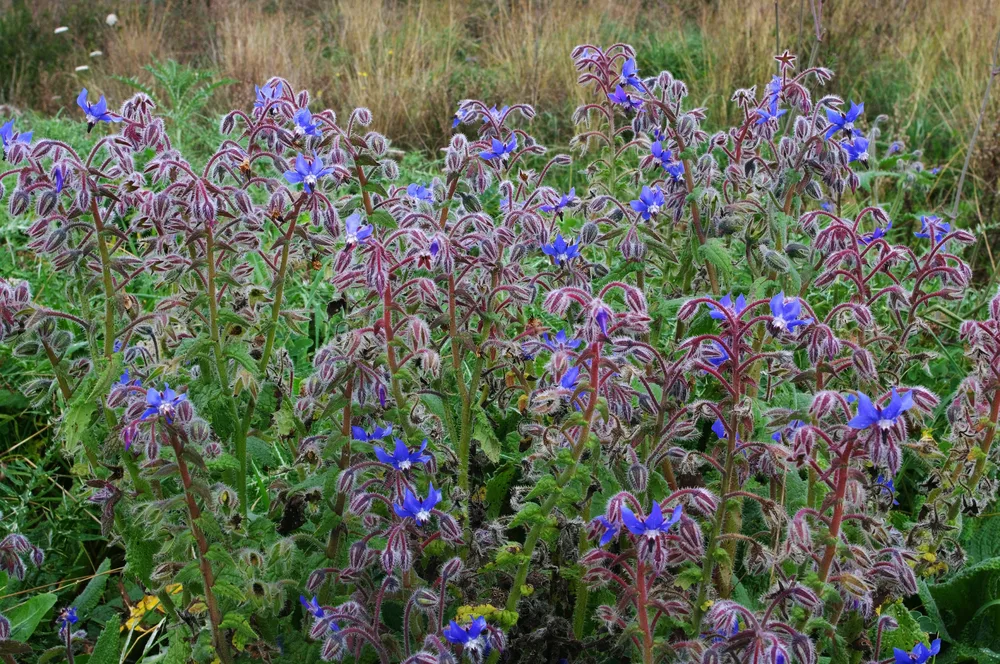
Using herbs as companion plants just makes sense. Most are easy to grow, and who doesn’t love a multipurpose plant? It’s no different with borage and strawberries.
Borage is largely seen as a culinary herb, but it is often planted because it brings many benefits to the table in the garden too.
This herb repels several pests that love strawberries and their foliage. Borage also attracts many pollinators to your garden. Increased bee activity improves the health and yield of strawberries, while benefiting the rest of your garden.
Borage grows in similar conditions to strawberry, making this powerful pairing even better. Borage needs full sun to boastfully grow its attractive foliage. It’s not particular about soil type, as long as it’s well-draining and remains moist.
4. Caraway
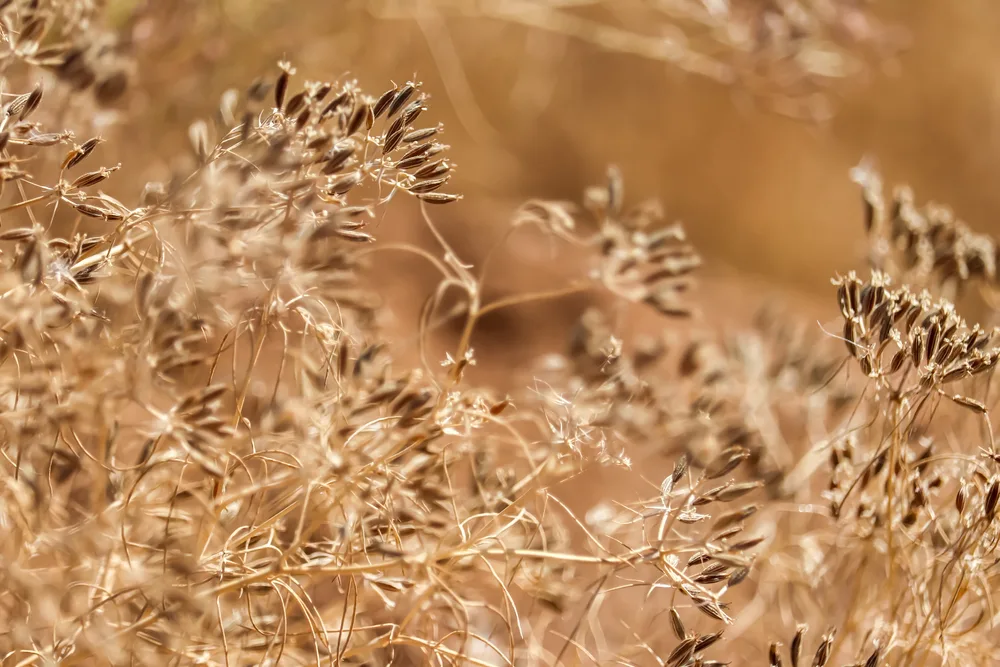
Caraway is another herb that helps deter pests from strawberries. This herb is often grown for its seeds, but it also makes a great companion for strawberries.
It keeps away many pests that enjoy nibbling on the flesh of strawberry fruits and their foliage – namely wasps, aphids, mites, and parasitic flies.
5. Catnip
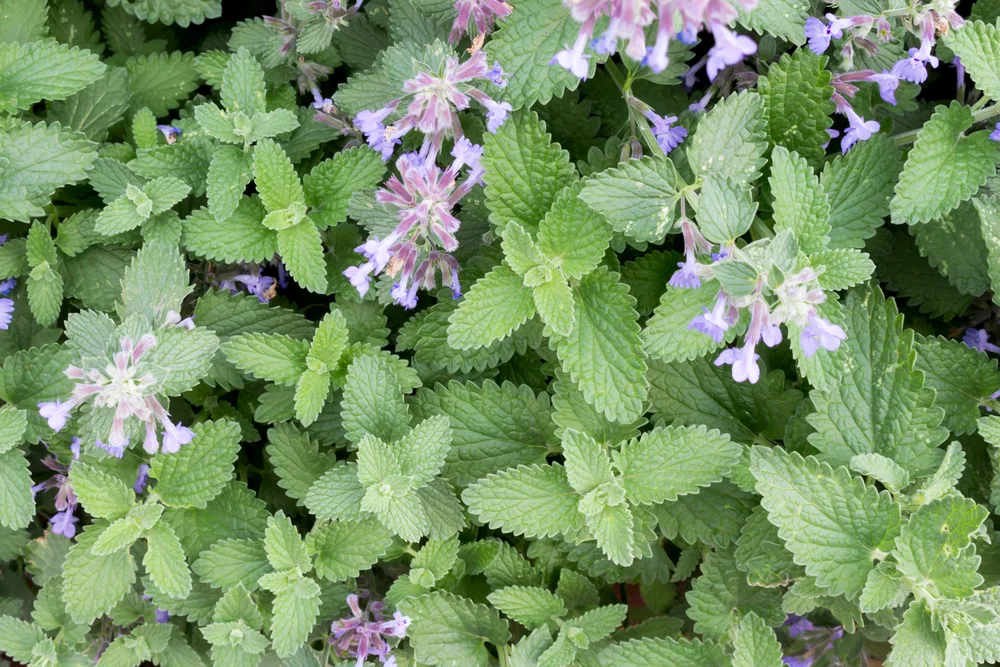
Another great plant that keeps aphids and mites at bay is catnip. As with most strawberry companion plants, catnip enjoys the same conditions as strawberry, growing best in USDA Zones 3-9 and loving full sun with occasional shade.
Catnip, like most herbs, needs well-draining soil and a consistent watering routine. Plant catnip in-between strawberries along the rows. They should be planted relatively close together, while still allowing space for adequate root growth.
6. Yarrow
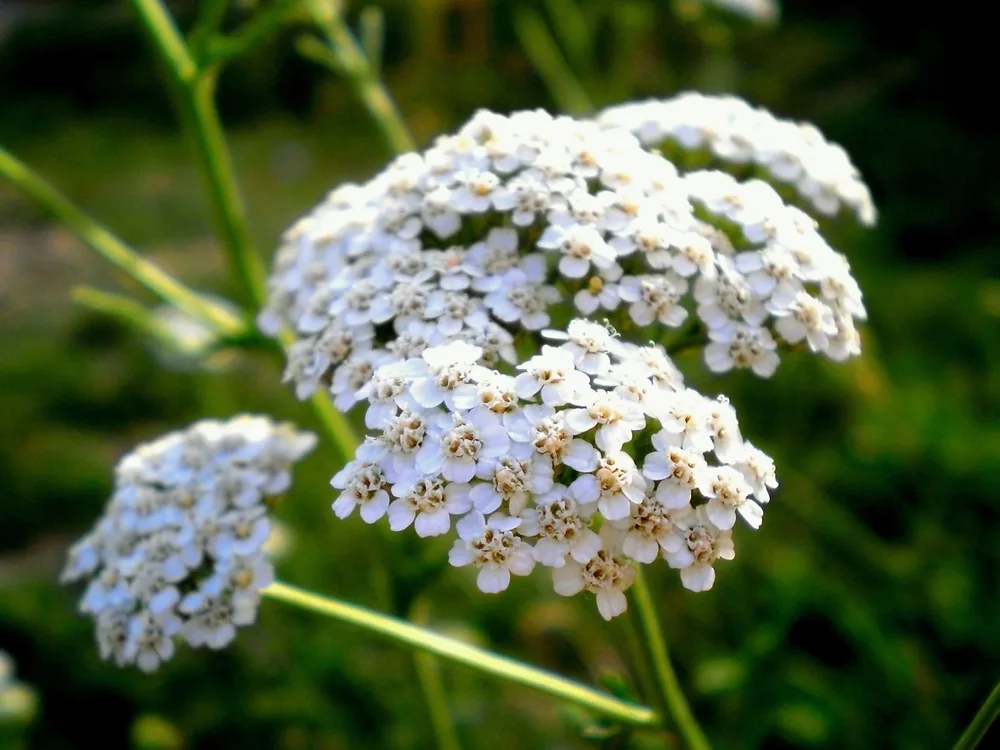
Yarrow is a common companion plant for many plants, including lavender and roses. More specifically though, it’s used as a companion for fruits and vegetables.
Yarrow’s stunning yellow flowers look great while attracting many pollinators to your garden. More pollinators increase the yield of strawberry fruits – a major benefit.
This hardy perennial is one of the few that thrives in low-quality soil, but it will do just as well amongst strawberries. It grows best in Zones 3-9, tolerating heat, humidity, and drought. Despite that, it will enjoy the weekly watering that strawberries receive.
7. Alliums
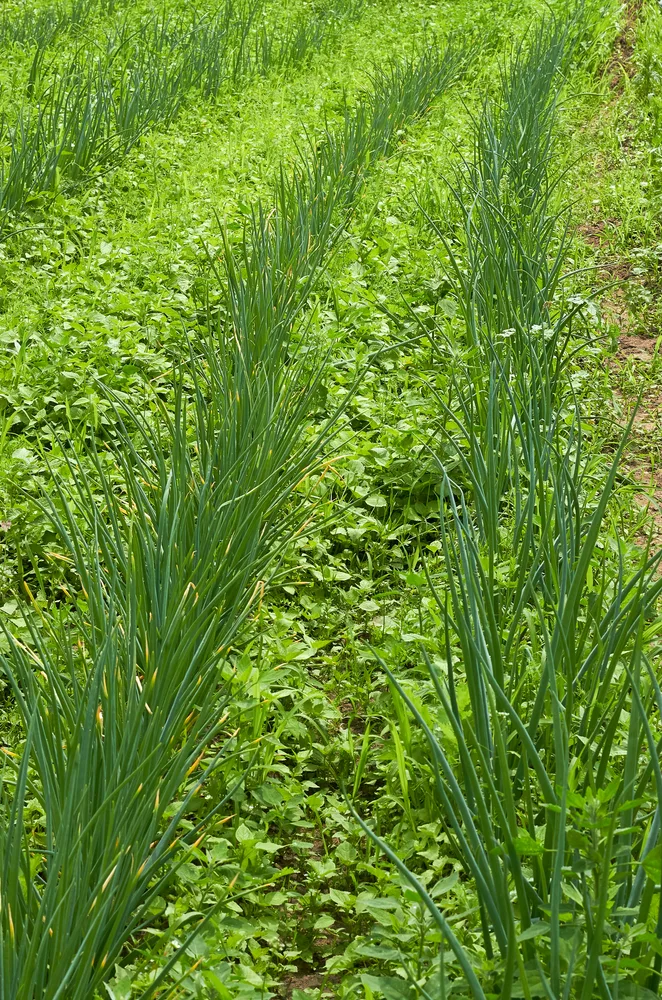
Members of the onion family make great companion plants. Their strong smell deters many bad insects and their interesting flowers complement other plants in the vegetable garden. They’re useful companions for many vegetables, including carrots, and most importantly – strawberries.
Chives, onions, and garlic are all great options to choose from. They all thrive in similar conditions to strawberries. Further, they particularly deter insects from feasting on strawberries.
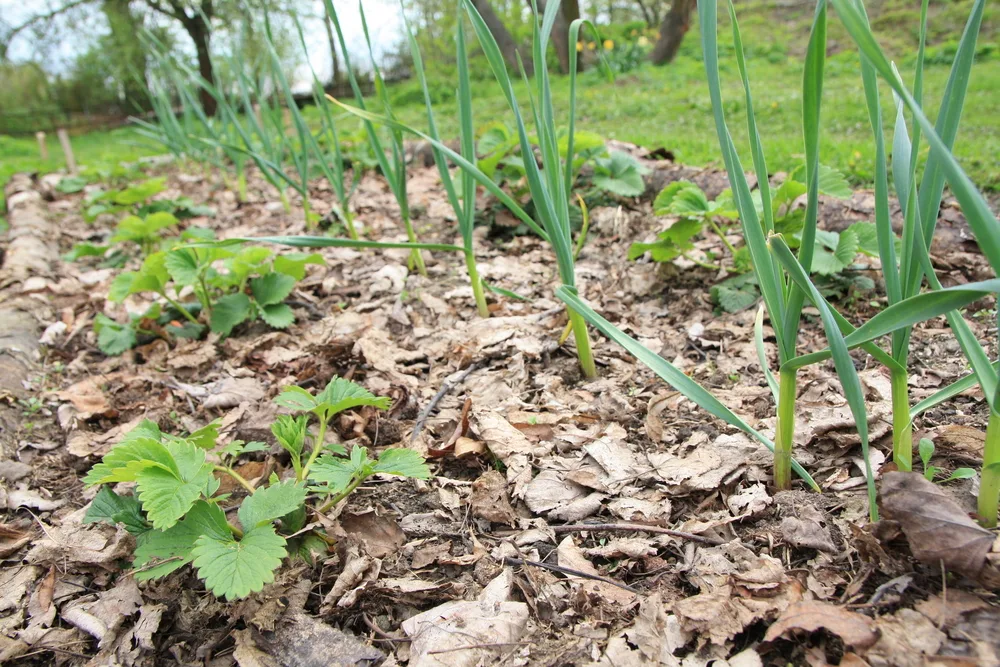
Some gardeners also report that they improve the flavor of strawberries – why not see for yourself in your own garden?
8. Sage
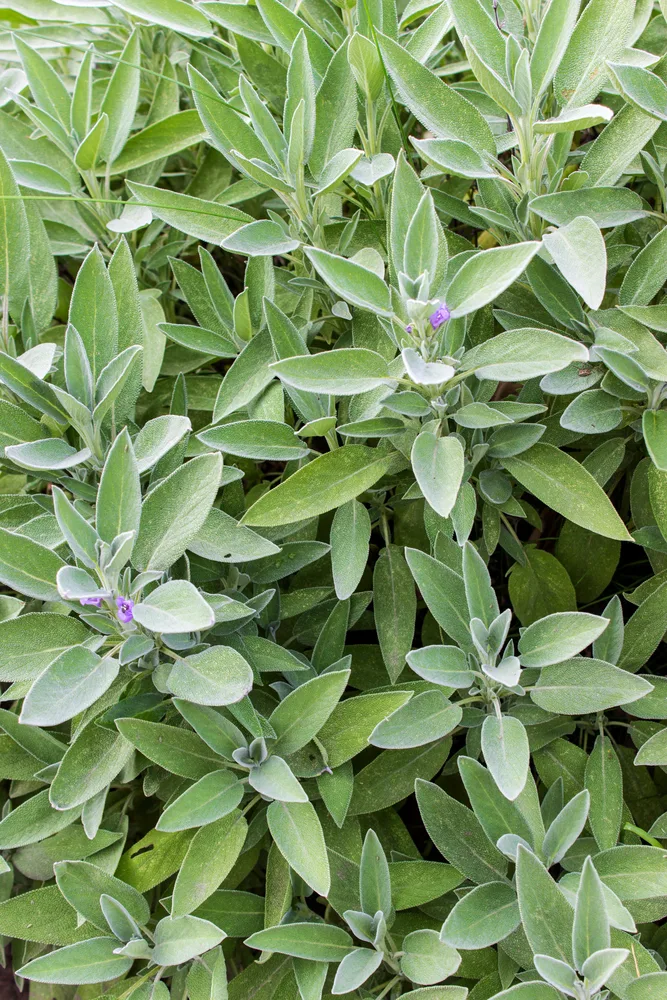
If enhancing flavor is something that you’re after but chives aren’t for you, sage might be the answer.
This herb is another gardening favorite, not just because it’s a great addition to food. Sage makes a great companion for a variety of plants. From lavender to roses and carrots, sage just works. Strawberries are no exception. Sage’s smell deters many strawberry pests, including slugs, all while enhancing the flavor of the fruit.
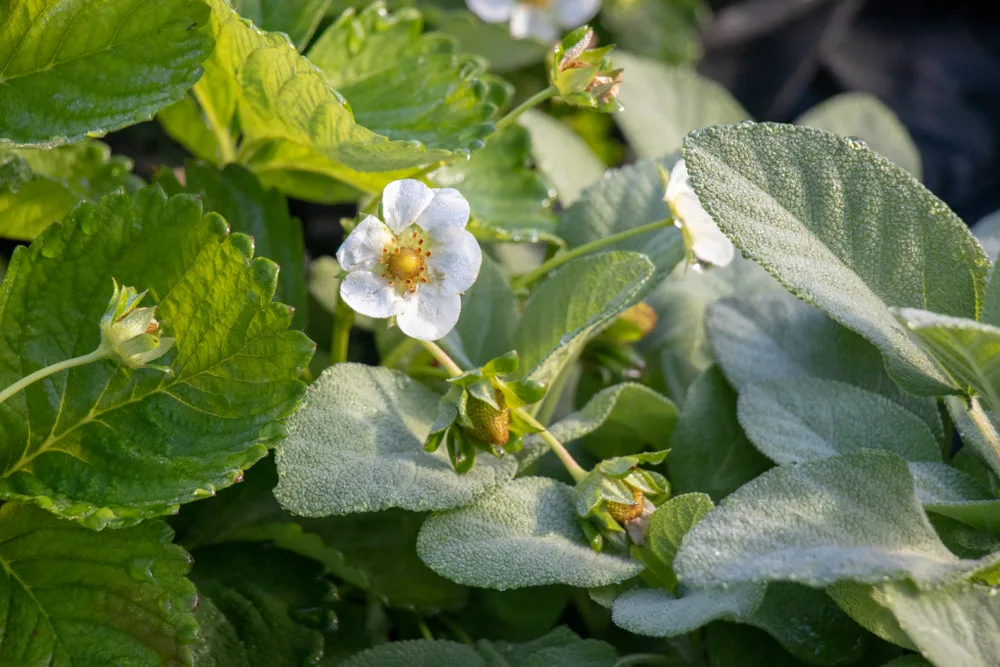
The best thing about sage is that there is no worry about adding it to your garden. It’s an easy-going herb that thrives in a variety of climates. Like its possible companion, sage needs full sun and well-draining soil.
9. Spinach and Lettuce
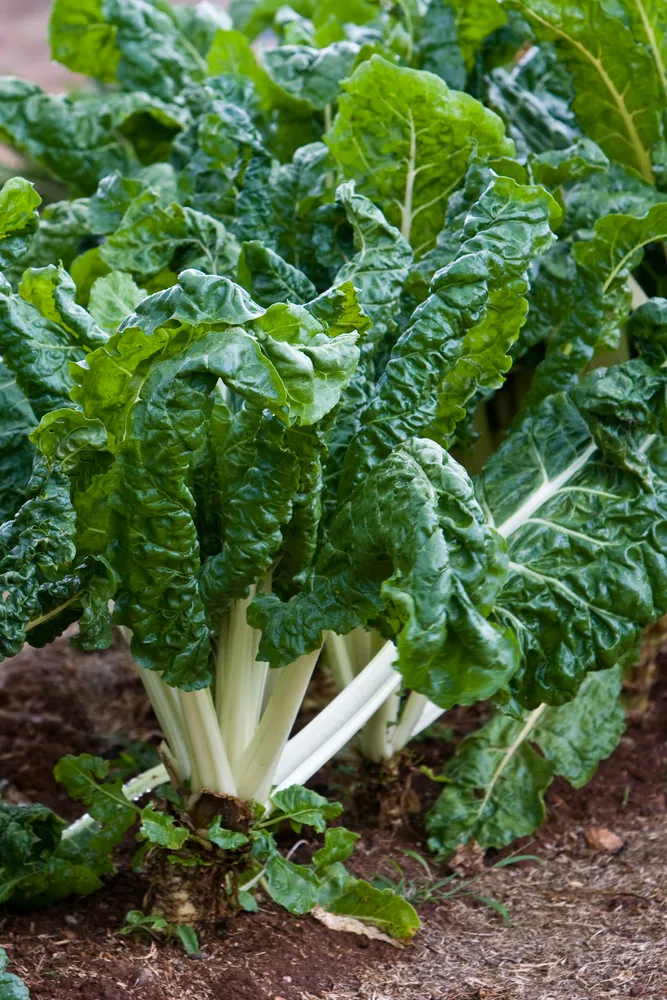
Leafy greens are good for you and your strawberries. Spinach and lettuce are believed to grow effectively with strawberries, improving growth. All three thrive in the same climate and conditions.
Lettuce isn’t too particular, but it grows best in cooler climates. Spinach is much the same. Both need well-draining, loamy soil, and a regular watering routine. Further, the large foliage of lettuce and spinach may protect lower blooming strawberries from birds.
10. Thyme
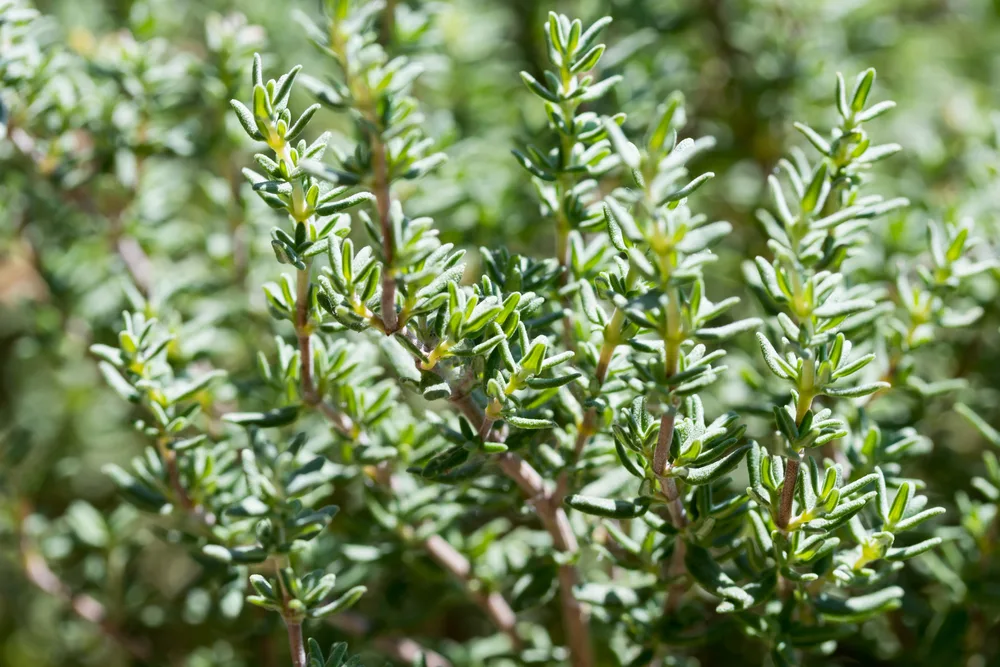
Thyme is yet another garden favorite (the list is long, I know). But with its multi-purpose use in and out of the kitchen, why wouldn’t it be?
Thyme makes a great border plant for strawberries, deterring pesky worms and looking great while doing it. It also attracts beneficial insects that feed on dreaded aphids and caterpillars.
Thyme is easy to care for too. All it needs are days of full sun and little water. Its Mediterranean origin makes it a drought-tolerant herb that thrives in a variety of climates (Zones 5-9). If you live in drier areas that require you to water your strawberries more often, opt to plant your thyme in pots close by, as too much water is detrimental to thyme.
11. Rhubarb
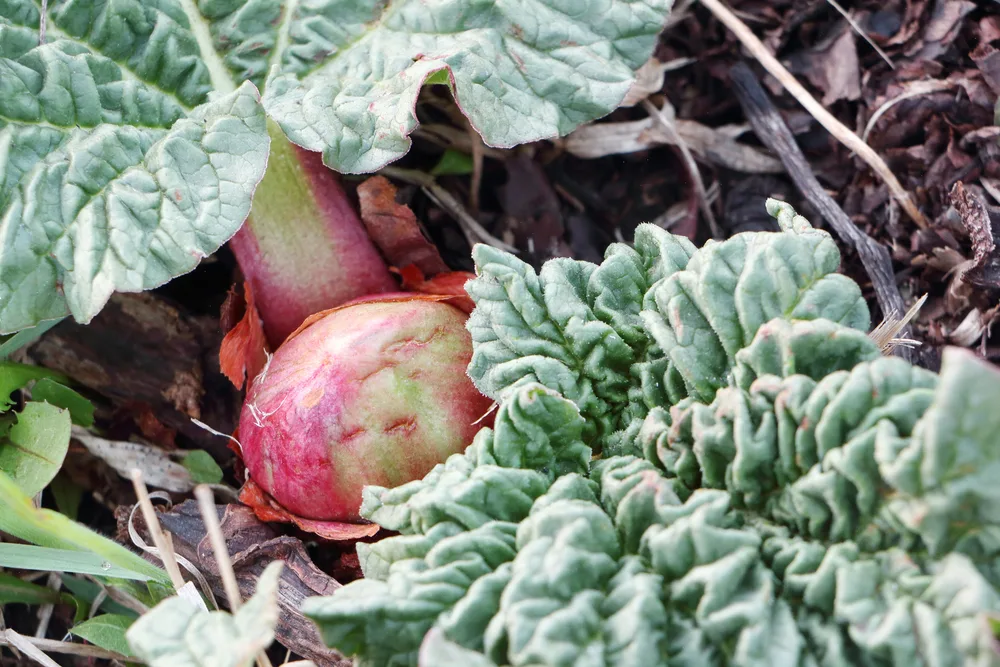
Two plants that are mutually beneficial are rhubarb and strawberry. They complement each other in the garden and in the kitchen, making an excellent pie.
Rhubarb grows best in USDA Zones 3-9, although it enjoys cooler climates the most. Just like its new partner, rhubarb enjoys full sunlight, appreciating afternoon shade in warmer climates. Rhubarb’s soil needs are the same as strawberries too.
Pairing these two plants together is highly beneficial for both strawberries and rhubarb. They effectively ‘share’ soil nutrients, as their roots grow at different lengths. The spreading of the strawberry plant along the ground also acts as a ground cover, keeping weeds at bay for both plants.
2 Plants to Avoid
1. Cauliflower and members of the Brassica family
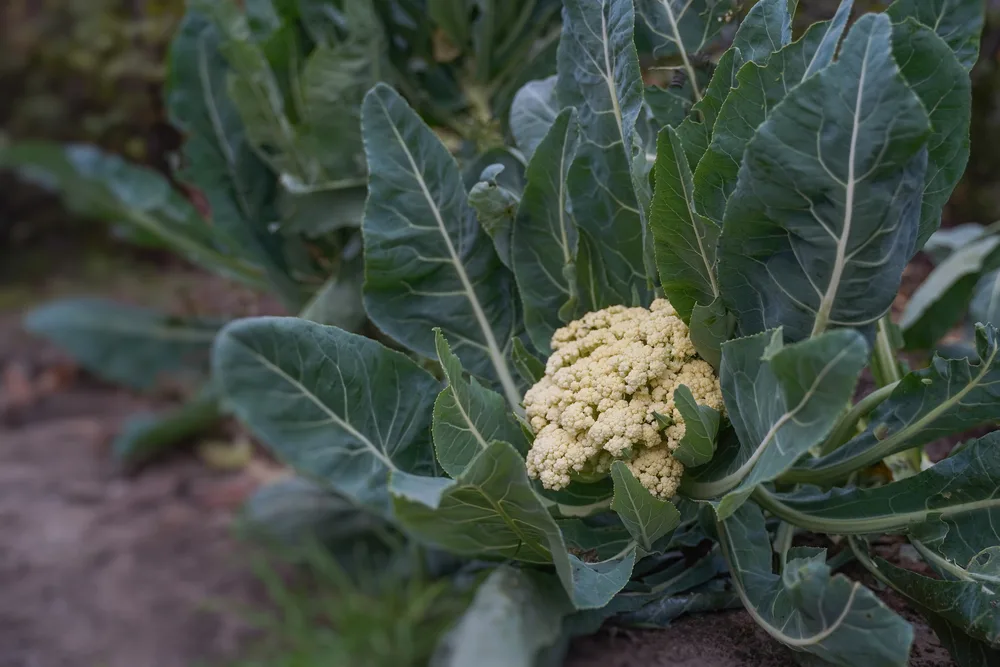
Cauliflower may be a member of the cabbage family that you’re looking at adding to your garden, especially if you live in cooler climates. It’s needs for full sun and consistent water lines up with strawberries’. Further, their soil requirements are the same.
However, strawberries are detrimental to the growth of cauliflower, and other brassicas. They attract unwanted slugs that favor cauliflower over strawberries.
2. Tomatoes and members of the Nightshade family
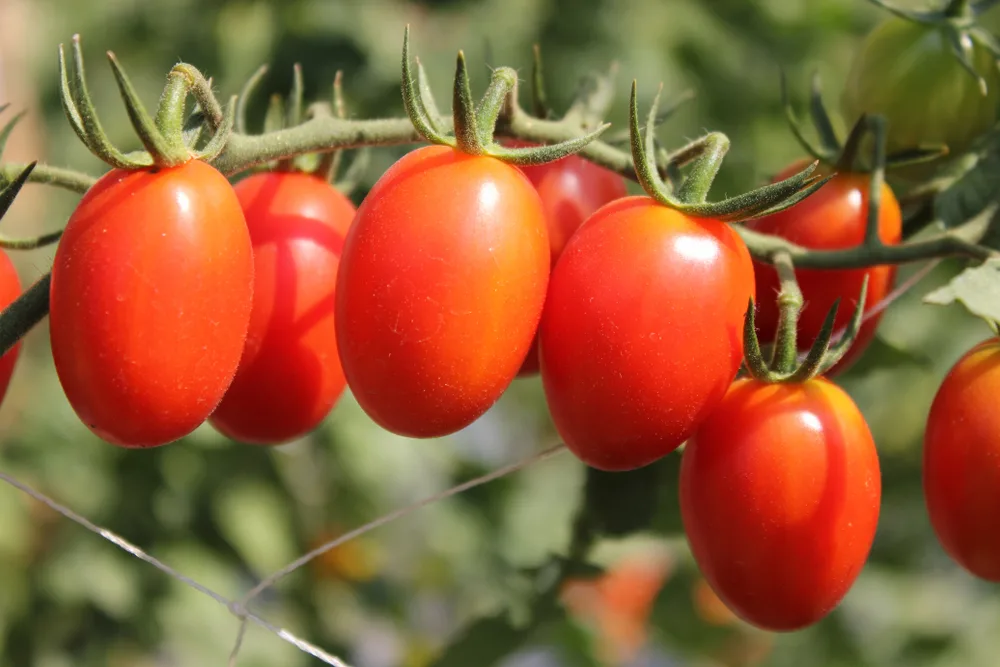
Members of the nightshade family should be kept far away from strawberries. These include tomatoes, potatoes, and eggplants.
They may be some of the best vegetables to plant in your garden – simple and easy to care for. However, they can cause one of the most detrimental fungal diseases affecting strawberries, Verticillium wilt. This soil-borne disease is more likely to occur when strawberries are planted in the previous spot of tomatoes or potatoes.
Some gardeners suggest that cross-contamination of diseases also occurs between tomatoes and strawberries. Plus, many of the same pests are attracted to both plants. Even if you plant aphid deterring companions, the allure is often too much, and the aphids will become even more of a nightmare.
Garden strawberries are simple to grow, needing just a little TLC to get it right. In the right conditions, strawberries are sure to reward you with plump, delicious fruits.
But, who wouldn’t want an extra helping hand? Some things remain out of our control, especially plagues of pests and diseases. Companion planting helps keep these at bay. Even better, some bring out the best in your strawberries.
My favorite thing about companion planting is its ability to get multiple uses out of plants. Whether it be herbs that taste great, make you feel better, keep aphids off your strawberries, or hardy perennials that add some color to your garden, while attracting the best pollinators around – you really can’t go wrong with companion planting.
More Strawberry Gardening Tutorials & Ideas
How To Plant a Strawberry Patch That Produces Fruit For Decades
7 Secrets for Your Best Strawberry Harvest Every Year
15 Innovative Strawberry Planting Ideas For Big Harvests In Tiny Spaces
How To Grow New Strawberry Plants From Runners
How to Make an Easy to Water Strawberry Pot
10 Fantastic and Unusual Strawberry Recipes that go Beyond Jam

Get the famous Rural Sprout newsletter delivered to your inbox.
Including Sunday ramblings from our editor, Tracey, as well as “What’s Up Wednesday” our roundup of what’s in season and new article updates and alerts.

